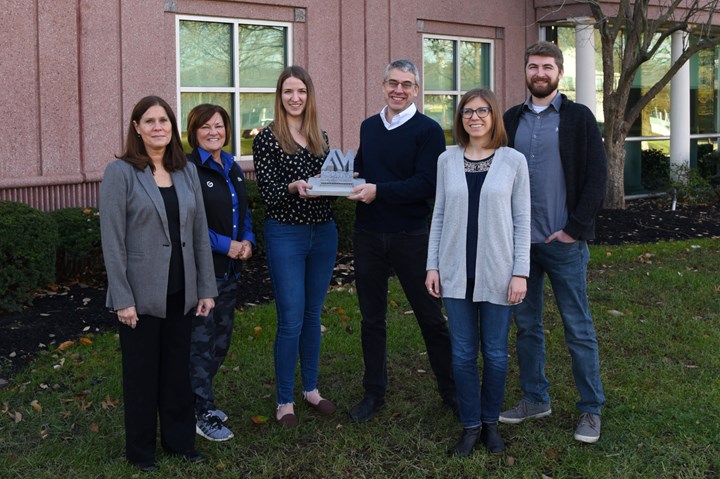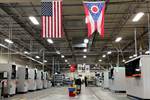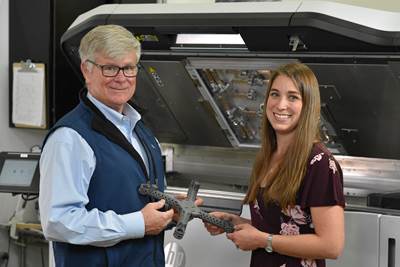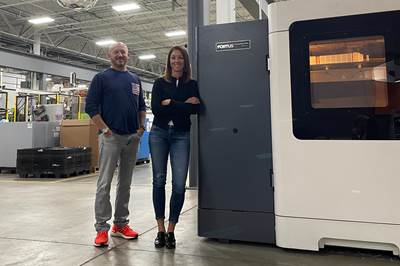There is a line I think about a lot, because of the way it speaks to our distorted expectation of change. It is a quote attributed to Bill Gates. He said, “We always overestimate the change that will occur in two years and underestimate the change that will occur in 10.” Often I am making a point about the two-year increment when I bring up this quote, but right now, I am thinking about the other part.
Welcome to the 10-year anniversary of Additive Manufacturing Media, which began with the launch of Additive Manufacturing magazine one decade ago.
I was there at the launch. I have helped to shape our various media efforts within this brand, which now also include a podcast and video series. I am so proud of all we have done over 10 years, yet to just as great an extent, I also marvel at all that has changed — all that has been achieved — in industrial 3D printing during this time.
As I say, usually I am focused on the two-year part of that quote. AM’s ongoing advance is transforming manufacturing. This remains true even when the indicators do not seem to move quickly enough during a time increment as brief as a year or two. But at this anniversary, I get to have a different perspective: Part of the wonder of the moment is getting to see what 10 years of change look like.
Certain early assumptions we made were validated. For example, we leaned into focusing our coverage of AM on applications for production. We saw this as the ultimate role of the technology. That position is bearing out today, so much so that you might have to take my word for it just how bizarre some initially saw this position to be. We also knew (or accurately guessed) that 3D printers would come to be seen as commonplace pieces of equipment within established manufacturing businesses such as machine shops.
But then there were all the changes we did not foresee. Within the past 10 years, entirely new options in 3D printing have arrived, including digital light processing, Multi Jet Fusion, FFF with embedded metal powder and others. Companies that did not exist 10 years ago now loom large on the AM landscape. And the early expectation that 3D printing might compete with conventional manufacturing has come full circle. It started out as a fear, came to be seen as overblown once understanding advanced, and then, as AM technology has matured to its current state, that expectation has come to be seen as more credible.
In recently posted stories, we have offered glimpses of just how far we have now come. In a sense, our recent coverage of 3D printing has been four-dimensional — because so many recent stories involve companies we’ve covered in the past. These might be our where-are-they-now stories, except the applications have advanced so far that we have new stories to offer rather than updates. Companies making significant new progress with AM since we first reported on them include Additive Engineering Solutions, Lincoln Electric, Retraction Footwear, Tangible Solutions and The Technology House. And at Thogus Products, subject of the very first cover story of our magazine, we find another case of early expectations being validated.
Other notable recent stories also fit the moment. Ten years ago, what is now the world’s leading event for additive manufacturing had not yet even been launched. Now, that show, Formnext, plans to come to the US. Meanwhile, transformative industrial technologies of past centuries are now themselves being transformed, including carbide and locomotives.
What will the next 10 years bring? I have some guesses. Thanks to AM, independent inventors will come to be seen as a new class of manufacturers; polymer composite will replace metal on a widespread basis; digital sourcing of replacement parts will lead to dual-specification of components from the outset, so they can be made both additively and conventionally; and we will see machine shops that specialize in nothing but the CNC machining needs of metal AM parts. I’ll stop here for now.
Perhaps a better answer is this: I do not know what the next 10 years will bring. But we are going to find out, and we on the Additive Manufacturing team will share what we learn, each step of the way.
Thank you for 10 years. For whatever part of that time you have been with us, thank you for your interest — for making the work we do possible, and for joining us on this journey.

At our 10-year anniversary, Additive Manufacturing’s editorial team includes (left to right): production editor Angela Osborne; art director Aimee Reilly; writers Julia Hider, Peter Zelinski and Stephanie Hendrixson; and videographer Austin Grogan. This photo was taken in front of Gardner Business Media’s headquarters in Cincinnati, Ohio. The logo made through laser powder bed fusion is a favorite item of ours; it was made for us in 2015 by the company now known as Linear AMS.
Related Content
DMG MORI: Build Plate “Pucks” Cut Postprocessing Time by 80%
For spinal implants and other small 3D printed parts made through laser powder bed fusion, separate clampable units resting within the build plate provide for easy transfer to a CNC lathe.
Read More3D Printed Titanium Replaces Aluminum for Unmanned Aircraft Wing Splice: The Cool Parts Show #72
Rapid Plasma Deposition produces the near-net-shape preform for a newly designed wing splice for remotely piloted aircraft from General Atomics. The Cool Parts Show visits Norsk Titanium, where this part is made.
Read MoreThis Drone Bird with 3D Printed Parts Mimics a Peregrine Falcon: The Cool Parts Show #66
The Drone Bird Company has developed aircraft that mimic birds of prey to scare off problem birds. The drones feature 3D printed fuselages made by Parts on Demand from ALM materials.
Read MoreVulcanForms Is Forging a New Model for Large-Scale Production (and It's More Than 3D Printing)
The MIT spinout leverages proprietary high-power laser powder bed fusion alongside machining in the context of digitized, cost-effective and “maniacally focused” production.
Read MoreRead Next
Polymer 3D Printing for Production, in a Pandemic and Beyond
Production 3D printing soared in 2020, brought about by supply chain shortcomings and needs related to the pandemic. More than a year later the scene is different, but The Technology House sees promise ahead.
Read MoreThe First Choice Was Right: How RP+M Succeeded With Production FDM
This additive manufacturing company narrowed its focus onto the 3D printing capability it knew best and the industry sector best able to benefit from FDM production parts. Characterizing and controlling the process was the breakthrough that has led to production work from Boeing and others.
Read MoreWhen Additive Manufacturing Becomes Business As Usual
Medical implant manufacturer Tangible Solutions has had its share of growing pains to arrive at full-scale production via AM. But now, the company’s challenges are those that any contract manufacturer might recognize.
Read More






















